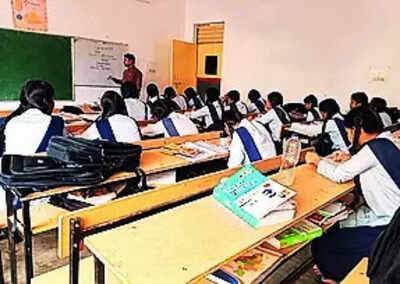Kendriya Vidyalayas see steepest drop in enrolments in five years despite expansion push: Check details here

For the first time in five years, fresh enrolments in Kendriya Vidyalayas (KVs) have fallen to their lowest, registering just 1,39,660 new admissions for the 2024–25 academic session, according to data shared by the Ministry of Education in the Lok Sabha on Monday. The decline marks a steady downward trend in both new admissions and overall student strength, raising questions about access, demand, and the structural constraints within one of India’s largest centrally run school systems.
Year-on-year decline evident
Union Education Minister Dharmendra Pradhan, in a written reply to the Lower House, presented a detailed year-wise record of new admissions and total student strength across KVs. The data reveals a consistent drop in fresh enrolments from 1,95,081 in 2020–21 to 1,39,660 in 2024–25. Correspondingly, the total student strength also fell from 14,29,434 in 2021–22 to 13,50,518 in 2024–25.
The figures suggest that while enrolments briefly recovered in 2023–24, the overall trajectory remains negative, with this year marking the steepest fall in both new and total numbers.
A national network under pressure
Kendriya Vidyalayas, which operate under the Kendriya Vidyalaya Sangathan (KVS), were originally created to meet the educational needs of children of transferable Central Government employees, especially those in Defence, Paramilitary Forces, PSUs, and autonomous institutions. Currently, 1,280 KVs function across India, including:
- 125 in Uttar Pradesh
- 78 in Rajasthan
- 41 in Jharkhand
- 37 in Andhra Pradesh
Despite this wide geographical spread, the system is showing signs of stress, with constrained infrastructure, limited teacher capacity, and growing demand in urban and semi-urban clusters.
Expansion plans amid declining numbers
In a move aimed at reinforcing capacity, the Union Government sanctioned 85 new Kendriya Vidyalayas under the Civil/Defence sector in December 2024. It also approved the expansion of an existing KV in Shivamogga, Karnataka, by adding two extra sections to every class.The total budget for this initiative is pegged at ₹5,872.08 crore, with ₹2,862.71 crore allocated for capital expenditure (construction, infrastructure) and ₹3,009.37 crore marked for recurring operational costs.However, the minister noted that construction of permanent school buildings is subject to variables such as:
- Availability and legal transfer of land
- Approval of architectural plans and cost estimates
- Fund allocation and release
- Timely clearances from local authorities
These procedural bottlenecks often delay the opening or expansion of new KVs, despite approvals being in place.
Why are numbers falling?
Experts point to multiple reasons behind the slump in enrolment:
- Admission saturation: Existing KVs are oversubscribed, with limited intake capacity, especially in urban centres.
- Land and infrastructure delays: Many sanctioned schools remain non-functional due to delayed construction and lack of facilities.
- Rise of alternatives: Growth of private CBSE-affiliated schools in tier-2 and tier-3 towns may also be drawing away potential applicants.
- Policy ambiguity: In some zones, lack of clarity over transfer norms and quota restrictions for different categories may deter parents.
The road ahead
While the government maintains that “setting up new KVs is an ongoing process,” the sharp dip in enrolments signals a need for reassessment of priorities. With rising pressure on school infrastructure, and parents still showing strong preference for affordable and quality public education, experts urge the Ministry to accelerate construction timelines, digitise admission management, and invest in faculty development.





